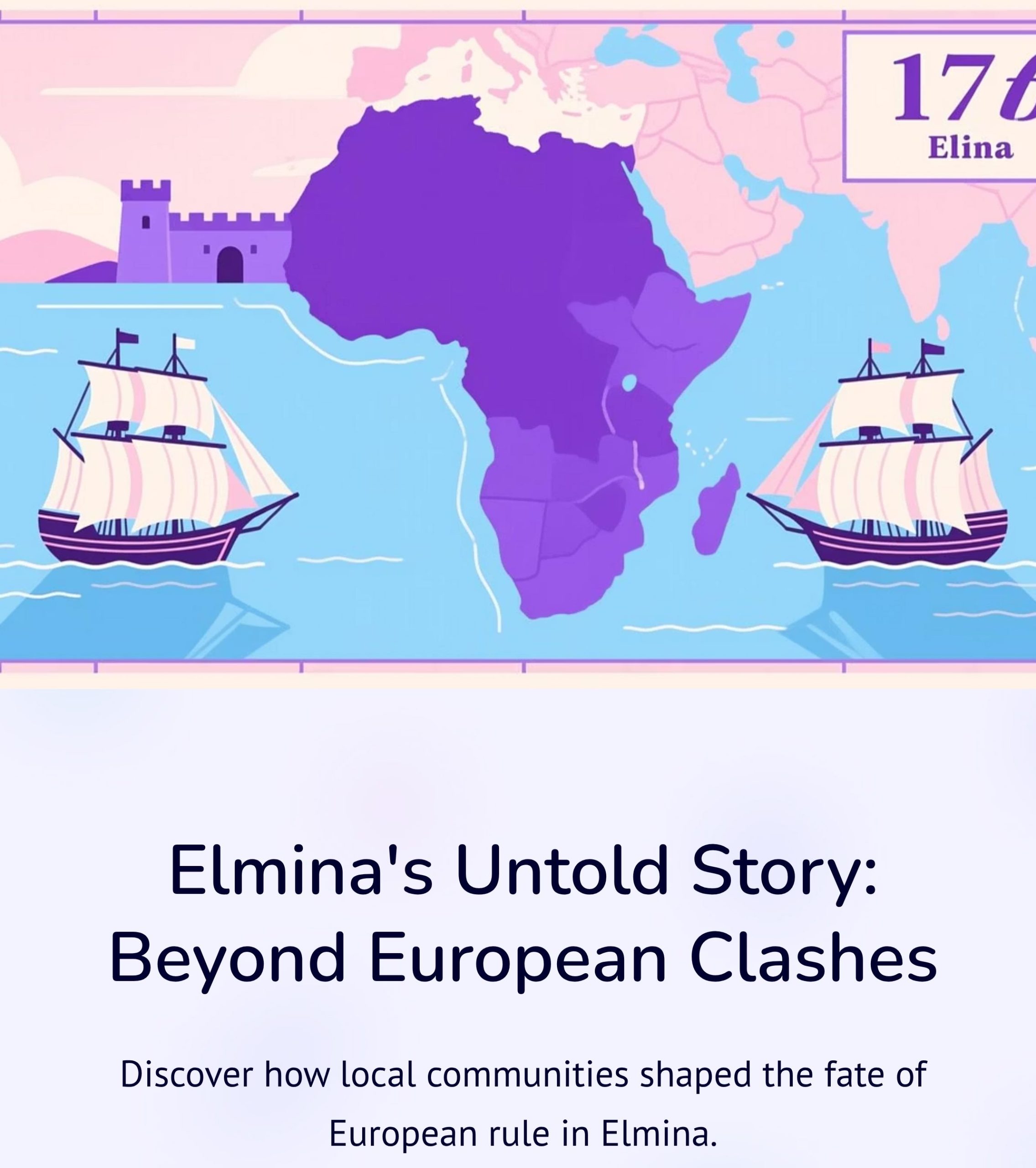Role and Impact of Locals in the Battles for Elmina


When the Dutch launched their first major attempt to seize Elmina in 1625, they arrived with a formidable force of about 1,200 men, supported by 150 Fante auxiliaries under General Arent Jacobsen. This alliance shows how essential local support was to European military operations: the Dutch understood that without African allies, their campaign would be nearly impossible.
In his journal, Expedition to the Gold Coast: The Journal of Jan Dircksz Lam about the Dutch Attack on Elmina, 1624–1626, one gets a rare eyewitness account. According to his record, the Dutch marched towards the Castle but were exhausted by the tropical terrain and climate. At this critical moment, Portuguese defenders, joined by about 200 Elmina fighters, struck with overwhelming speed and precision.
The rout was catastrophic for the Dutch. Their officers were cut down, soldiers drowned in the sea as they fled, and valuable weaponry was abandoned. Lam describes the awe with which the Dutch viewed the Elmina fighters, calling them “a God-fearing people” who delivered the decisive blow. Without the intervention of the Elmina warriors, the Portuguese garrison alone may not have been able to repel such a large force.
Twelve years later, the Dutch returned, better prepared and determined to capture the stronghold. They landed not far from Cape Coast and trekked to Elmina crossing the Sweet River by Canoe. This time, the battle centered on St. Jago Hill, the high ground opposite Elmina Castle. Approximately 1,000 local fighters again allied with the Portuguese, defending the hill and forcing the Dutch advance to stall for several days.
Despite the resistance, Dutch reinforcements and superior firepower eventually pushed the defenders back. Once St. Jago Hill fell, the Portuguese position became untenable, and Elmina Castle surrendered. With this victory, the Dutch seized control of Elmina, beginning a 235 years of dominance over the town and its trade routes.
Here again, local involvement proved decisive. The Dutch could not have succeeded without neutralizing the determination of Elmina’s fighters. The outcome was not solely a matter of European strategy; it was shaped by local choices, alliances, and resilience.
Both battles unfolded during the reign of Nana Ntakudzi I, King of Elmina. He ruled in a turbulent era, balancing diplomacy with European powers and maintaining authority over his people. The wars were not abstract struggles fought in the name of faraway monarchs; they were moments of crisis in his reign, where the survival and sovereignty of Elmina itself were at stake.
Why Did Locals Side with the Portuguese?
The allegiance of the people of Elmina to the Portuguese was not blind loyalty—it was shaped by over a century of contact, treaties, and entanglement:
Yet this alliance was not without tension. By the early 17th century, resentment was widespread:
In this way, local communities were not passive bystanders. They actively chose sides, guided by survival, economics, politics, and a keen understanding of shifting power dynamics.
The Dutch journals and European accounts of these battles meticulously record European losses, strategies, and triumphs. Yet they are conspicuously silent about the human cost for the people of Elmina. The displacement of families, the deaths of countless unnamed warriors, and the social upheaval in the town remain largely invisible in colonial archives.
This silence is itself a reminder of how history has often been written. The conquerors preserved their version of events, while the experiences of the people most directly affected, the Elminians were pushed to the margins.
What does it mean that European powers could sail thousands of kilometers and, under the banners of kings, queens, and faith, lay claim to the land, trade, and lives of another people?
What happened to the sovereignty of communities who already had their own systems of governance, commerce, and culture?
In Elmina, the battles of 1625 and 1637 are remembered not only as military confrontations but as moments when the agency of African people altered the course of global empires. Yet the selective memory of history has often reduced them to footnotes in European conquest narratives.
As descendants and custodians of this history, we bear the responsibility to reclaim and amplify these silenced voices. Elmina’s story is not only about castles and cannons, but about the choices, sacrifices, and resilience of its people.
At Brand Elmina, we are committed to telling these stories in their full complexity, stories that honour the ancestors who resisted, who negotiated, who survived, and who shaped the destiny of this town long before and after European conquest.
By Michael Kunke (Brand Elmina) & Sien Christiaanse (Museum Rotterdam)